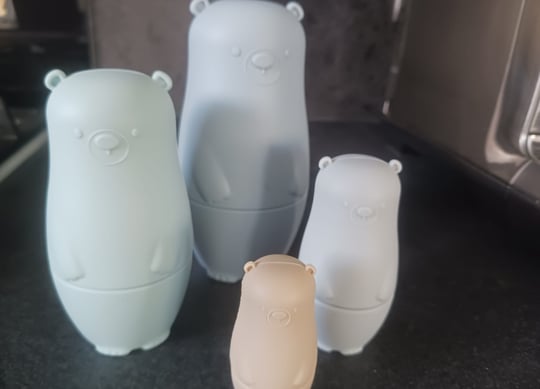Stacking Dolls


As an integrative counsellor, I pull from different theories and approaches to help my clients look at their situation from all sorts of angles and perspectives.
These are stacking dolls, a newer version of traditional Russian or stacking dolls.
I use them to look at the way early childhood experiences, normally represented by the smallest doll, impact us as we grow up. The client leads the way, deciding what age each doll represents. They can help to unpack complex emotions or behaviors that are disconnected or difficult to identify. Giving each doll an age, the client can explore specific stages of development and understand how earlier experiences are still impacting them. It is a creative way to bring those experiences to light.
By letting the client lead, they have a sense of ownership in the process, helping to make it feel more personal and empowering.
I have used these dolls for various issues that clients cannot find the root cause for, such as low self-esteem, repeated reactions to situations, repeat behaviours (being attracted to the same people who are not emotionally available, never being listened to, needing to feel in control).
I ask the client to talk to me about how life was when they were very small. Some can remember being very young whilst others have no real memories, just feelings. We then move onto the next doll, generally around primary school age although I do leave it to the client to tell me what age each doll represents. Normally at this age, a lot more is remembered. Small things, that don't seem particularly important to an adult, can sometimes be picked up. At a young age, such things can have a huge impact and we can already see a connection to their current behaviour. My clients often dont realise that there is a reason they remember something from their childhood that they consider not particularly important.
Without exception, clients have found the connections that they make bring them a better understanding of themselves and why they behave the way they do. The stacking dolls approach provides clients with a tangible way to connect their past experiences to their current behaviours and emotions. When they can see how those earlier experiences shaped their responses, it creates a moment of clarity for them. It’s one thing to talk about past influences, but to visualize them and place them in a way that’s meaningful to the client is eye-opening.
Generally, the client can see the effect themselves. However, I find that me interpreting what they have said, showing the connection between then and now, is very impactful. It is almost as if by voicing the connection, they can see how obvious it is. Highlighting how small, seemingly insignificant things can have a huge impact at a young age is profound. It makes sense that things adults might brush off could deeply affect a child, especially if they don't have the tools or context to process those moments. The ability to trace those subtle early experiences to current behaviors really helps clients see how their past has influenced their present in ways they hadn’t considered before. The act of voicing the connection and making it more tangible is a huge turning point. I help clients articulate something that was in their subconscious but hadn’t been fully realized yet. Once pointed out, they can see how the dots connect, and the realization can be both eye-opening and empowering for them.
By the time we reach the third doll, the process becomes even more crystallized. The client has moved through the stages of their life and now has a clearer sense of how their past experiences are influencing their present-day behavior. It is a moment of clarity and even release, finally understanding the "why" behind certain patterns.
The last doll is generally a representation of them now.
The process of putting each smaller doll inside the larger one, while reflecting on the impact of each stage, helps the client realize how all those past experiences are still within them, shaping who they are today. It is a visual representation of how those early influences are contained within the person they are now, but also a reminder that each layer, each experience, has contributed to their growth.
This helps clients see how they’ve evolved and how they’re carrying those past experiences, whether consciously or unconsciously. It also opens up a space for healing or acceptance, recognizing that while those past experiences may have shaped them, they also have the power to shape their future.
It is so empowering for clients to see that they are not at fault for the ways they’ve been impacted by their past, but instead, they can start to understand how those circumstances influenced their patterns. This kind of awareness can be the key to letting go of shame and guilt, opening up space for growth and change.
Clients often feel a huge relief in that they understand themselves better. It tends to shift blame from themselves to their circumstances which are not their fault. This can be incredibly healing.
It helps clients move from a place of self-criticism to self-compassion, which is such an important part of the therapeutic process. By seeing how their past shaped their behaviors and feelings, they can start to separate who they are now from the painful experiences they had, recognizing that many of their reactions and struggles were deeply rooted in things beyond their control.
I used these dolls myself in my own therapy and found them incredibly helpful. My personal experience of using this tool is proof of how much I believe in it. I am deeply passionate about helping others, and my genuine belief in my methods must make all the difference for my clients.
This is what I love about my job. I truly believe in every tool I use and I truly love the impact I can make on my clients.








